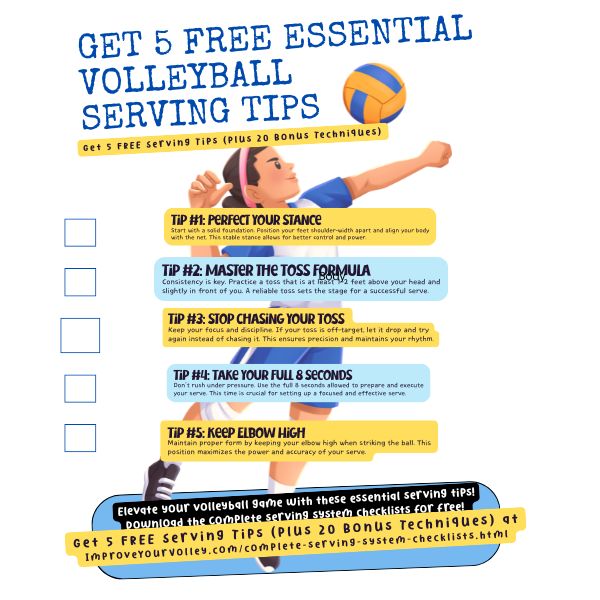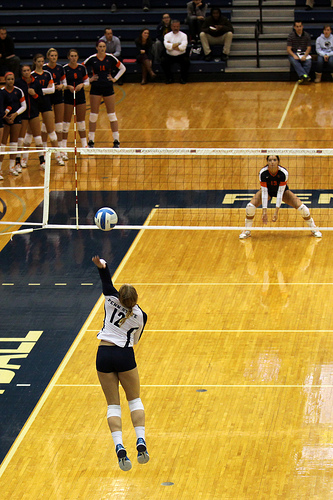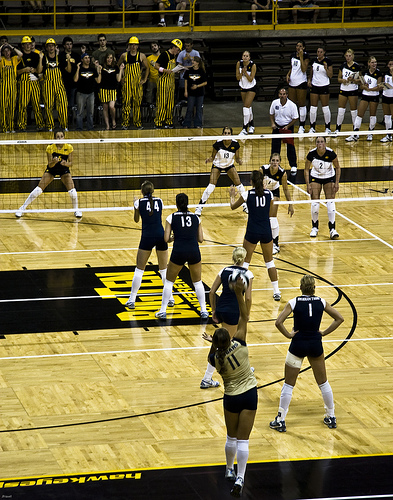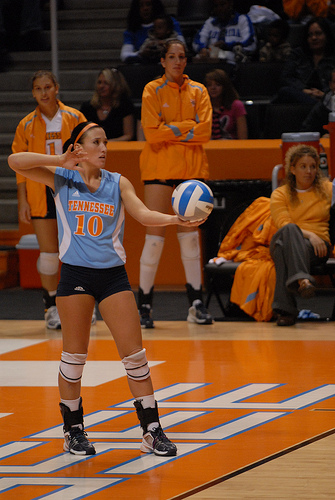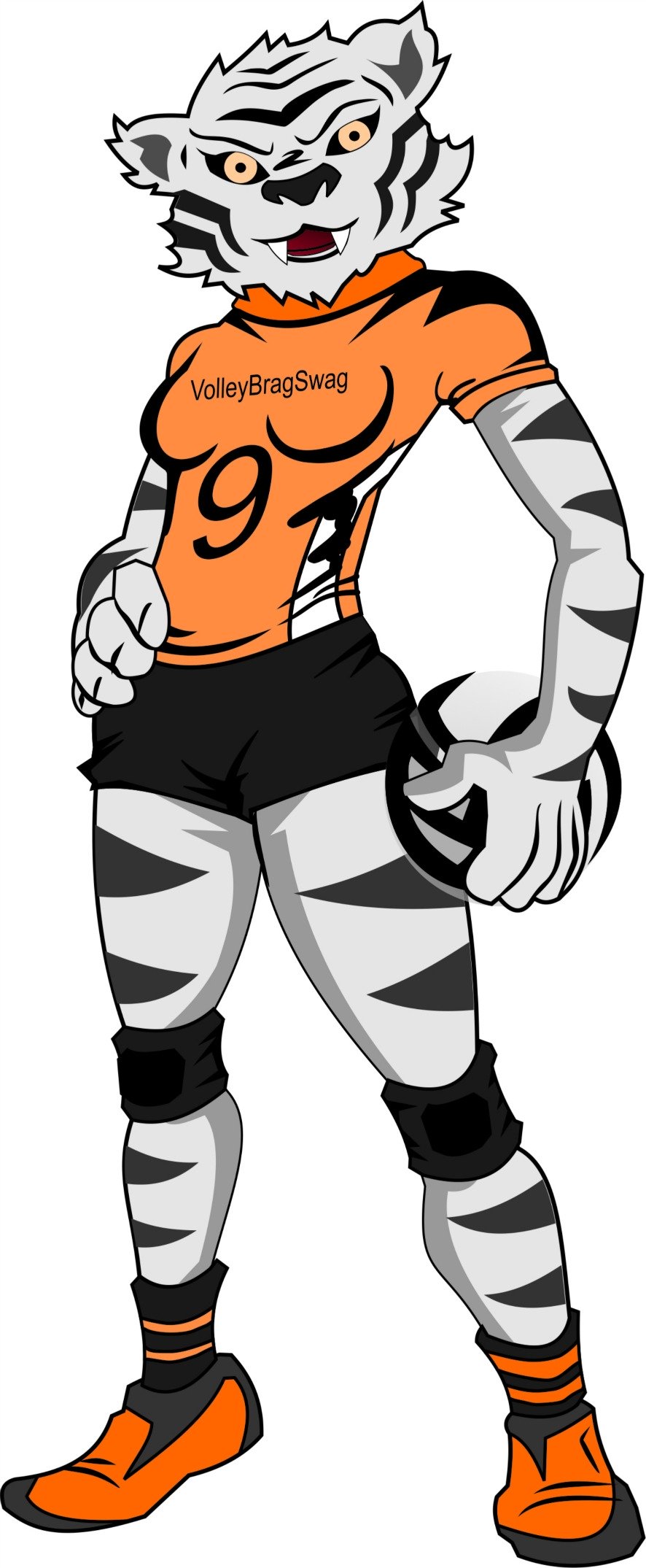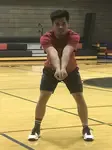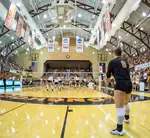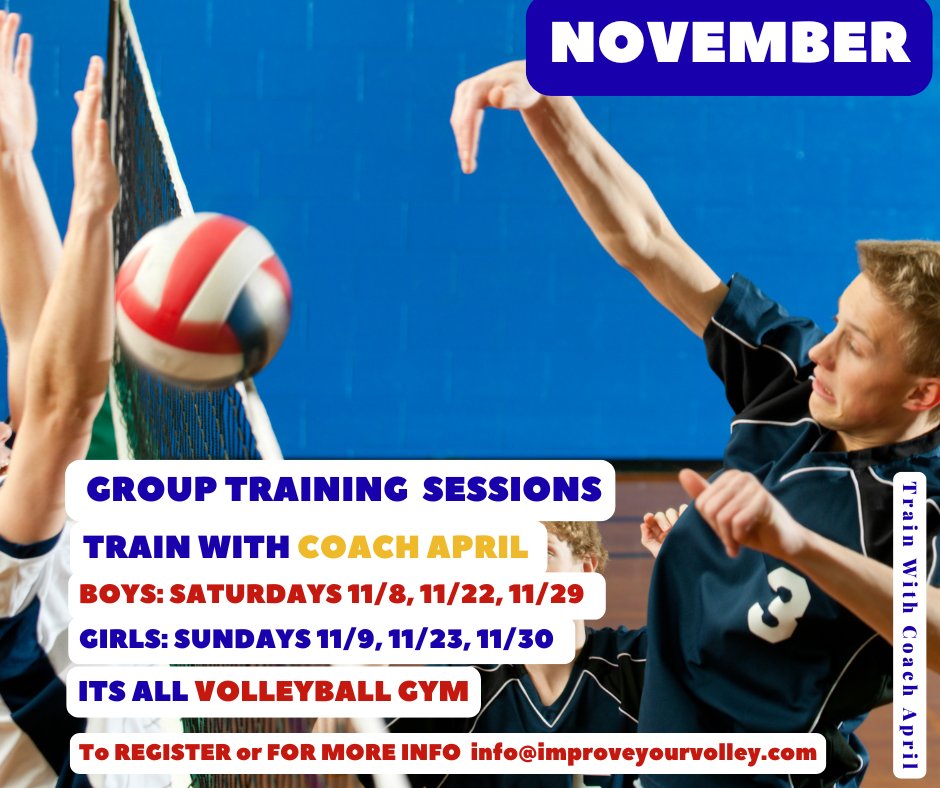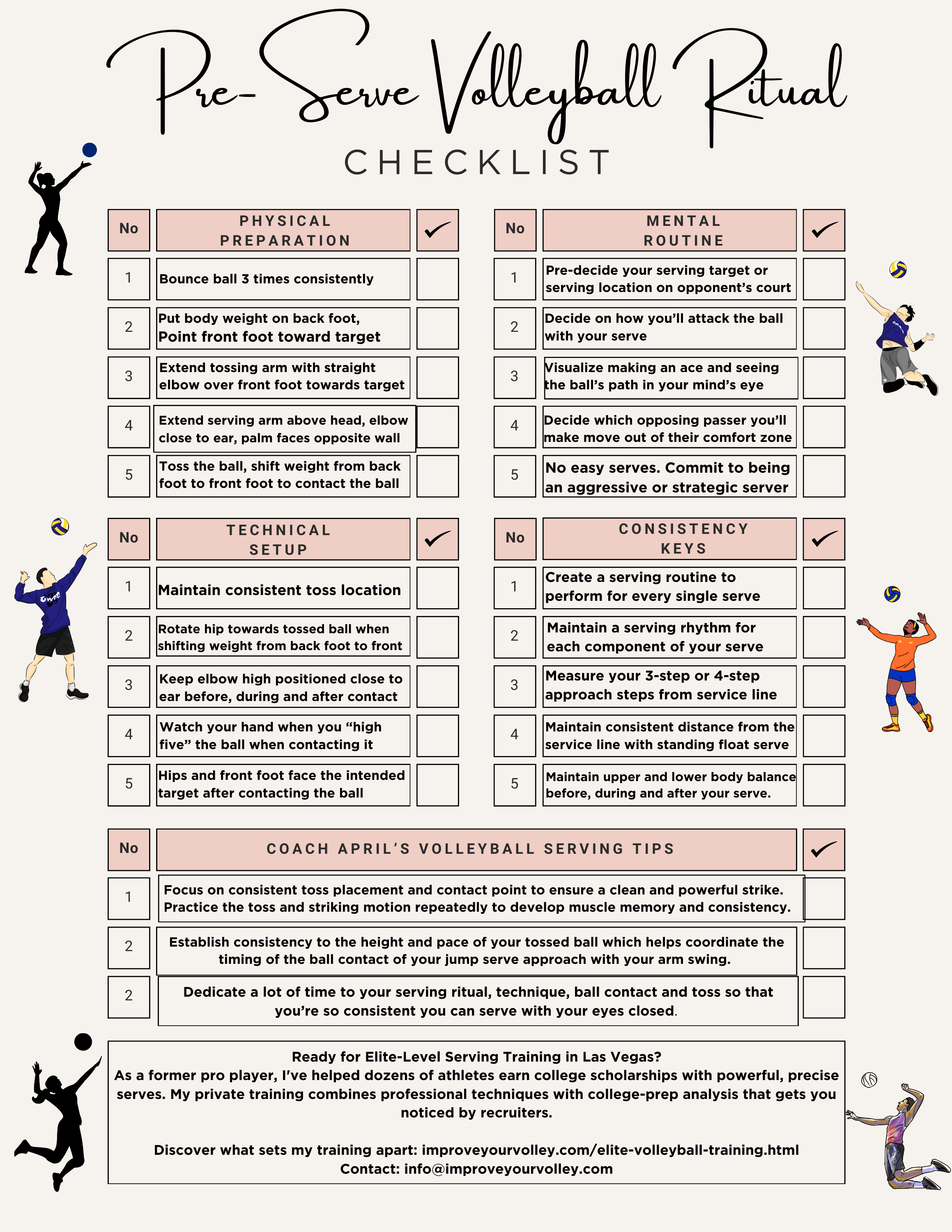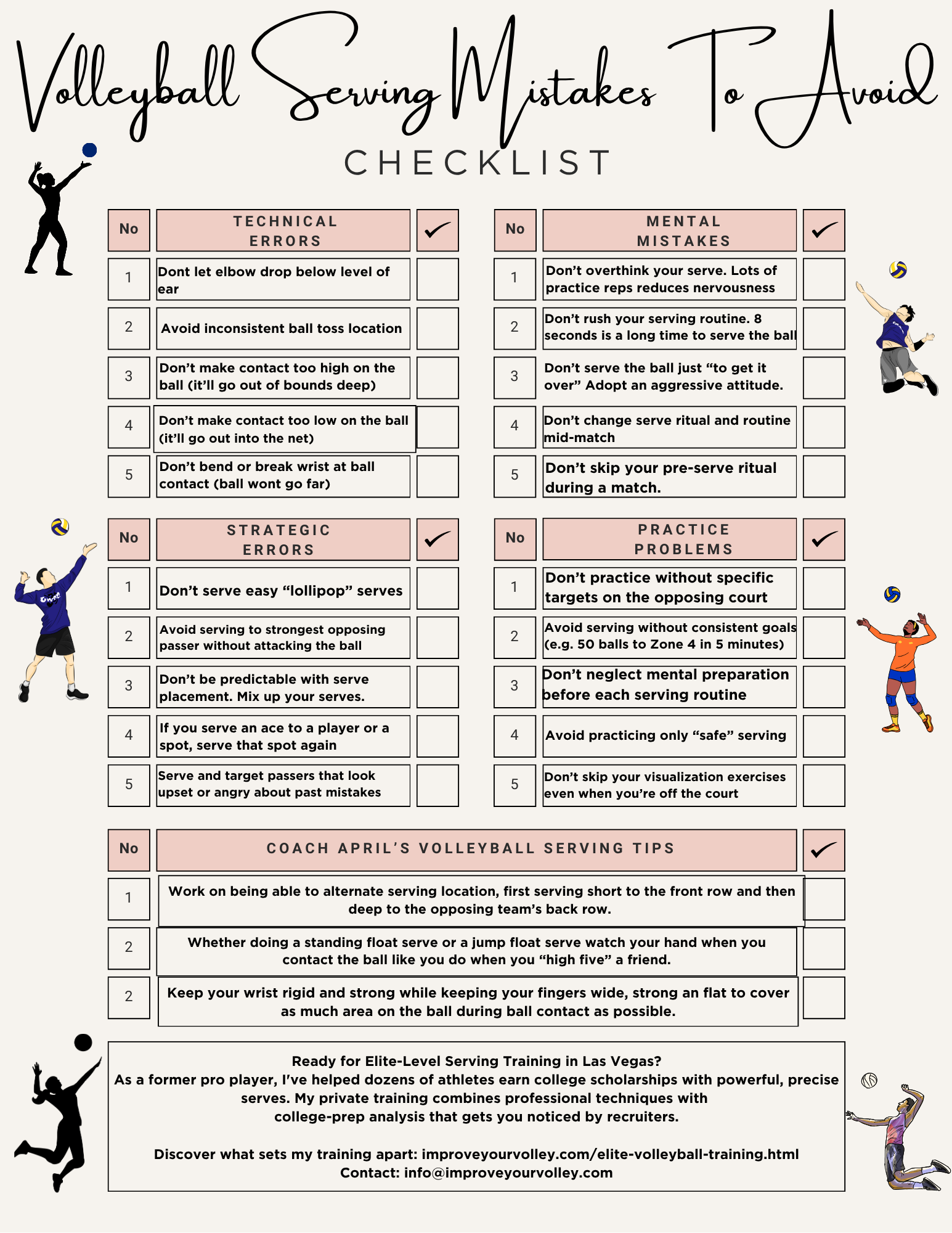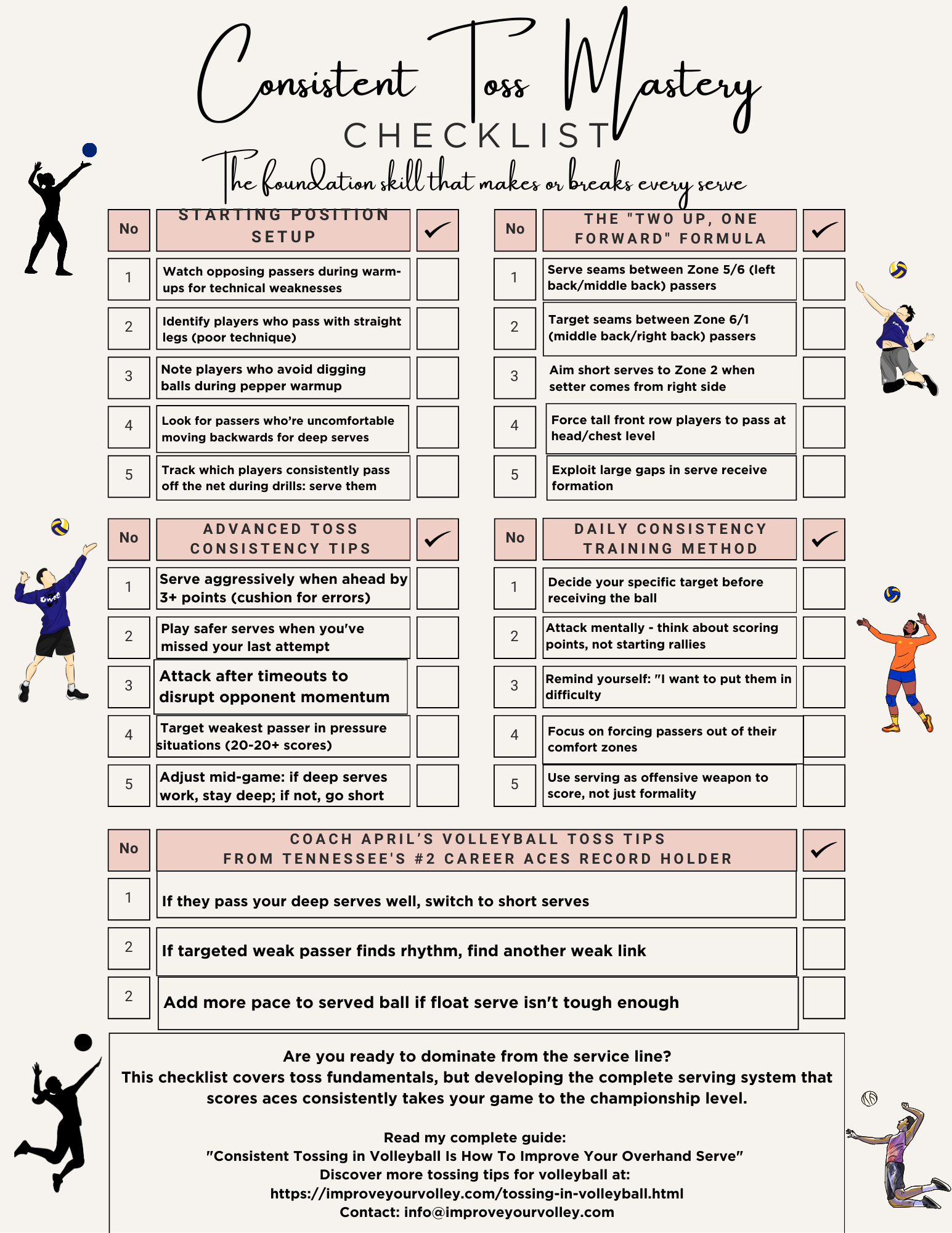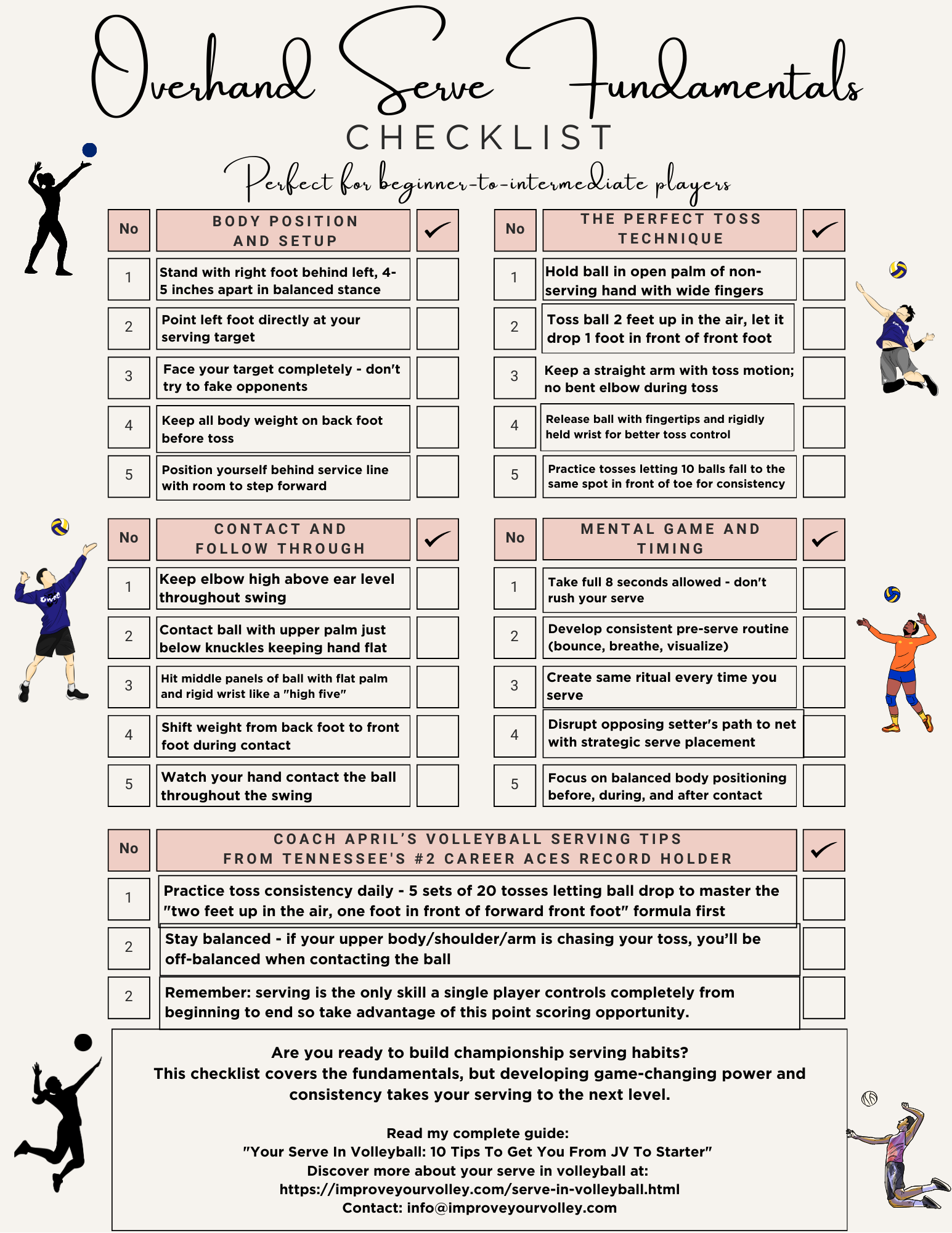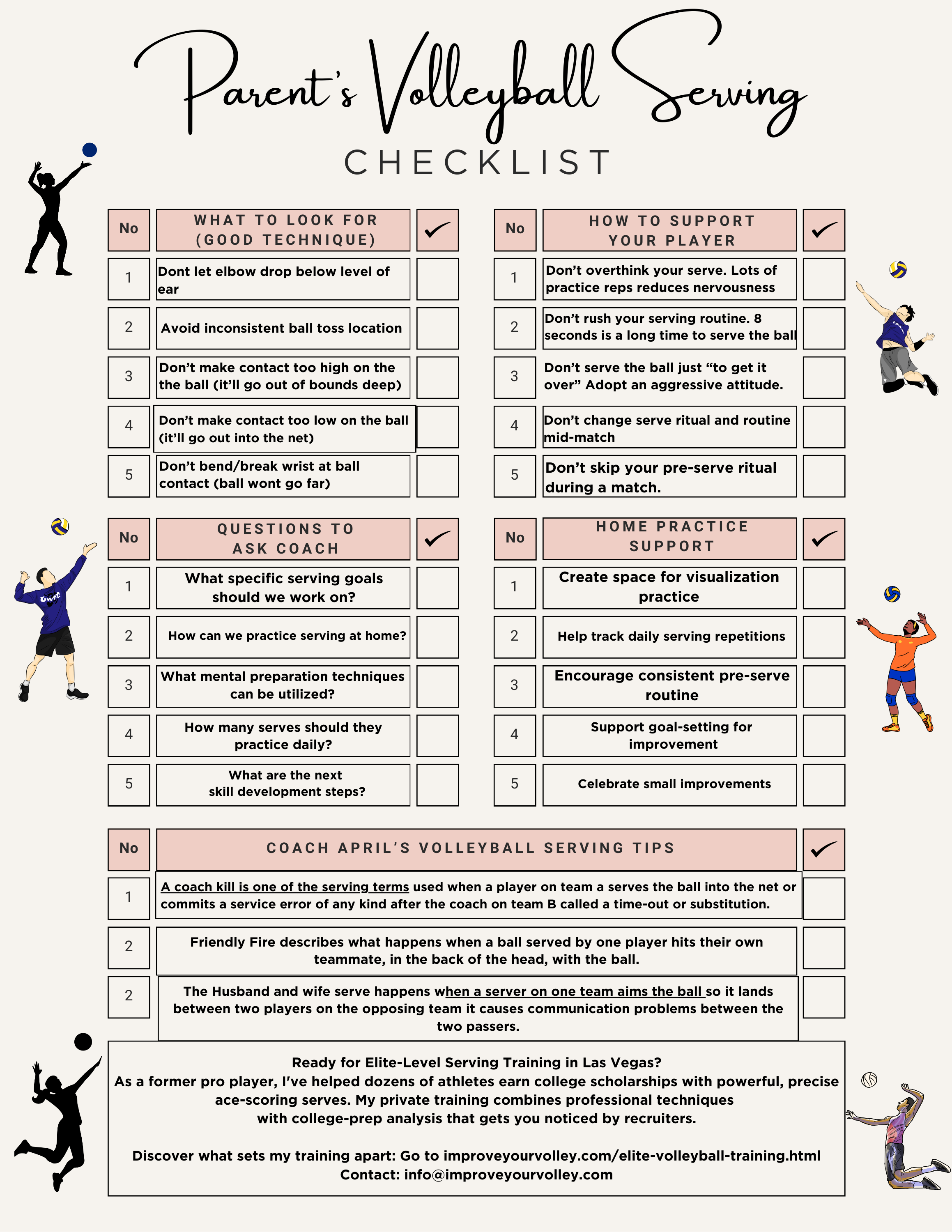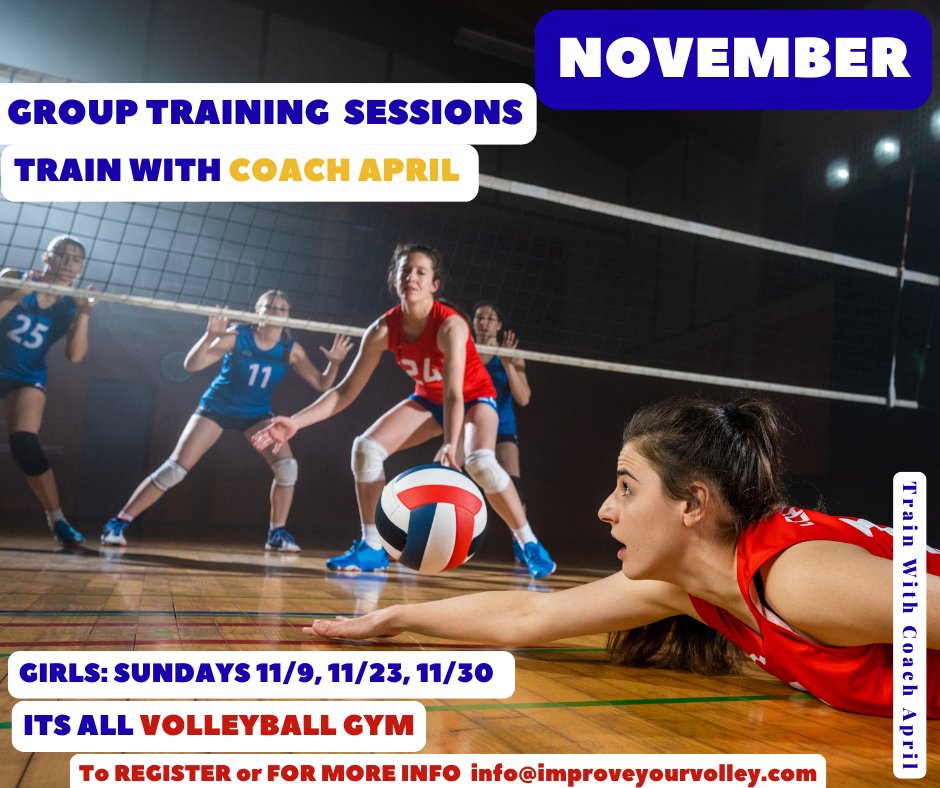Understanding the Let Serve Rule in Volleyball and Questions Answered
Learn important volleyball service rules and answers to basic let serve volleyball questions about what's legal when serving a ball from behind the service line.
Whether you're a player, coach, or just curious about certain serving rules of the game, this article is here to help you better understand specific volleyball serve rules.
Explaining the Let Serve Rule:
First I will define what the let serve is and how it differs from other types of serves in volleyball.
Then I'll answer questions such as whether a let serve is considered a fault or a legal play and how it impacts the flow of the game.
By the end of this page, you will have a solid understanding of what a let serve is and what its implications are during a match.
What Is A Let Serve?
In the past, if the ball touched the net during the serve, it would be deemed a fault, resulting in the opposing team gaining the side out and the right to serve.
In simpler language, if you served the ball and it touched the net in anyway as it was passing over from your court to the other team's court, the referee would blow the whistle because the ball was not allowed to ever ever ever touch any part of the net during your serve.
But the rule was changed so that now when "a let serve occurs", the play continues uninterrupted as long as the ball falls to the floor on the opposing team's court side.
The referees "let" the ball hit the net during a serve and both teams have an equal opportunity to make a play as long as the ball falls into the opposing team's which is the team in serve receive's court, to continue.
This rule was designed to add an element of unpredictability and excitement to the game, because players must be prepared to react very quickly to an unexpected ball bouncing off the net because of its change in trajectory as it hits or touches the net before travelling over it and this is caused by a let serve.
It also kept the ball in play for longer periods of time adding to longer rallies which is a more exciting game to watch as opposed to the referee starting and stopping the game too many times.
With the let rule the ball is kept in play for longer periods of time, without referee interruption which has helped to create longer rallies which contributes to a more exciting game to watch (by fans and spectators) as opposed to the referee starting and stopping the game too many times.
Does the Let Serve Change The Flow Of The Game?
While the let serve can change the flow of the game temporarily, it is important to note that play is allowed to continue to rather than immediately awarding the opposing team a point or the right to serve.
This way, players have to remain focused and ready to adapt to the circumstances presented by a let serve.
Understanding the let serve rule and its implications for gameplay is crucial for both servers and receivers.
By familiarizing yourself with this rule, you can adjust your passing strategy and quick reactions accordingly, turning potential let serves into an opportunity to gain an advantage or maintain control during rallies.
Common Misconceptions and Clarifications
In case there is confusion or if you have any misconceptions surrounding the let serve rule, I want to provide clarity, and address commonly asked questions in order to debunk any misconceptions.
My goal is to offer accurate information, and to enhance your knowledge and understanding of this important rule.
Volleyball Service Rules
What Is A Volleyball Serve?
The volleyball serve is the skill used to start a rally. The serve puts the ball in play with one player on the defensive team who launches the ball over the net to the team receiving serve once the referee blows the whistle.
What's the "let" serve in volleyball?
Is it a volleyball foul?
What's a "let" serve in volleyball?
The old rules were that when a server served a ball which nicked or touched the top of the net
- this is a fault
- the referee blew their whistle
- awarded the opposing team the sideout
- the server's team lost the ball to the opposing team
- the opposing team would get a point and the right to serve
Volleyball service rules have changed and now the let serve rule states that a served ball on its way to an opposing team's court...
- if it touches the top of the net and falls into the opposing team's court
that ball is still a live ball and can be played up.
Play continues until that ball drops to the opposing team's floor.
The referees "let" the ball hit the net and "let" play continue only if
- the ball hits the net and continues over into the opposing team's court.
Volleyball Service Rules
What Is The Service in Volleyball?
Also known as "the service" according to volleyball serve rules its the action taken by a player who is in the right back position in their team's rotation in the service area.
During the course of the game this player, while standing behind the service line, tosses the ball to with one hand and contacts the ball with the other hand while standing on the ground or while jumping in the air in order to send it across the net into the court of the team that's in serve receive.
Volleyball Service Rules
Does everyone on a volleyball team have to serve?
- There are 6 zones on the court.
- Six players rotate in and out of those zones so anyone of these six players who rotate into Zone 1 after their team has won the rally can serve. That person is called the "server" and is the only one who can serve at the beginning of each rally.
- A player can be substituted in from off the bench to replace one player on the court to serve in their place.
Volleyball Service Rules
Can a libero serve?
Yes.
In collegiate, high school and middle school competition a libero can serve. Only in international competition is a libero prohibited from serving in volleyball.
5 Volleyball Service Rules and Volleyball Fouls
What can the volleyball ball do once it's served?
Once the server has completed their serve, the volleyball ball must
- not contact any of the server's teammates before passing into the opponents court
- must completely travel between the two antenna's before landing into the opponents court
- not land in the net on the server's side
- land out of bounds
- pass over players who are creating a screen as blockers making it difficult or impossible for the opposing team's passers to see the travel path of the ball
All of the five things above will result in the referee blowing their whistle and awarding the ball to the opposing team, giving them to a chance to serve and possibly score a direct point.
Frequently Asked Questions Answered About The Let Serve
Question: 1. What is a let serve in volleyball?
Question: 1. What is a let serve in volleyball?
Answer: A let serve refers to a legal serve where the ball touches the net during its trajectory over to the opposing team's court and still lands within bounds, resulting in the play continuing rather than being considered a fault.
Question: 2.How does the let serve differ from a fault?
Question: 2.How does the let serve differ from a fault?
Answer: A fault occurs when the served ball does not clear the net, lands out of bounds, or violates other serving rules. In contrast, a let serve occurs when the ball touches the net during the serve but still manages to pass over and land within the opposing team's court.
Question: 3. Why was the let serve introduced in volleyball?
Question: 3. Why was the let serve introduced in volleyball?
Answer: The let serve rule was introduced to promote a more continuous and fluid style of gameplay. Instead of immediately halting play and awarding a point to the opposing team when the ball hits the net during the serve, the let serve allows for continued play and gives both teams an equal opportunity to make a play.
Question: 4. Are let serves considered a foul or a legal play?
Question: 4. Are let serves considered a foul or a legal play?
Answer: Let serves are considered legal plays in volleyball. While they may alter the trajectory and bounce of the ball, they do not result in a fault or penalty. Players must be prepared for the unpredictability of a let serve and adapt their gameplay accordingly.
Question: 5. Can a let serve result in an immediate point for the serving team?
Question: 5. Can a let serve result in an immediate point for the serving team?
Answer: No, a let serve does not directly result in an immediate point for the serving team. It simply allows play to continue if the ball lands within the opposing team's court. Points can only be earned through successful plays, such as a kill or an opponent's error, after the let serve.
Question: 6. Are there any misconceptions surrounding the let serve rule?
Question: 6. Are there any misconceptions surrounding the let serve rule?
Answer: One common misconception is that let serves are always intentional attempts to deceive the opponent. However, let serves often occur unintentionally due to the natural variations in serves and the ball's interaction with the net. They are a part of the game and must be dealt with adaptability and readiness.
Question: 7. How and when did the let serve rule come into existence?
Question: 7. How and when did the let serve rule come into existence?
Answer: The let serve rule has been a part of the official volleyball rules for several decades. It was introduced to enhance fairness and allow for a more continuous flow of play. The specific details of when the rule originated may vary, but it has become an integral part of the modern game.
Question: 8. Is there any strategy behind intentionally aiming for a let serve?
Question: 8. Is there any strategy behind intentionally aiming for a let serve?
Answer: While players do not typically aim for a let serve intentionally, there may be strategic advantages to adjusting their serving technique to increase the likelihood of a let serve occurring. The unpredictable nature of let serves can disrupt the opposing team's reception and make it more challenging for them to set up their attack, providing the serving team with an advantage in the rally.
Question: 9. Can a let serve be called if the ball barely brushes the net?
Question: 9. Can a let serve be called if the ball barely brushes the net?
Answer: Yes, even minimal contact with the net during the serve qualifies as a let serve. Whether the ball barely grazes the net or hits it more significantly, as long as the ball passes over and lands within the opposing team's court, it is considered a let serve.
Question: 10. Are there any interesting let serve trivia facts?
Question: 10. Are there any interesting let serve trivia facts?
Answer:
- The let serve is sometimes referred to as a "net cord" serve.
- A let serve may sometimes result in a "tricky" trajectory as the ball can rebound off the net in unexpected ways.
- Let serves can create challenging situations for the receiving team, as they must quickly adjust to the altered path and speed of the ball.
- Professional players often practice their serves to incorporate controlled let serves, capitalizing on the element of surprise and unpredictability.
Do You Follow Me on Pinterest?
 Private or semiprivate volleyball indoor/sand lessons are an excellent way for young Las Vegas high school volleyball players to quickly improve their individual skills through a private or semi-private coaching experience.
These lessons are conducted by former pro volleyball player, former USA Volleyball High Performance instructor and Evaluator and Tstreet Vegas 18s head Coach April Chapple on a weekly basis.
Sign up now!
Private or semiprivate volleyball indoor/sand lessons are an excellent way for young Las Vegas high school volleyball players to quickly improve their individual skills through a private or semi-private coaching experience.
These lessons are conducted by former pro volleyball player, former USA Volleyball High Performance instructor and Evaluator and Tstreet Vegas 18s head Coach April Chapple on a weekly basis.
Sign up now!Follow me on Pinterest Volleybragswag to improve your game even faster!
I share alot of individual, partner and easy-to-do volleyball serving drills we do in class with my followers.
Many of these volleyball practice drills you can do at home by yourself or try at your next practice with your teammates.
If you're a B team or JV player trying to make varsity next year...your goal should be to complete 1000 reps a day of at least three of the basic skills on your own...volleyball passing, serving and setting should be at the top of the list.
If your athlete struggles with consistent serve receive, gets subbed out, or is overlooked for playing time—this is the fix you’ve been looking for.

Struggling with passing consistency?
I help talented passers tired of getting pulled from games because of inconsistent serve receive skills BUILD passing confidence without expensive private lessons using the same 3-step system that's helped dozens of my athletes get recruited.
Download my eBook for $17.99 and start building the passing confidence that keeps you on the court—and gets you seen by college coaches.
From Lady Vol to Legend: Coach April Produces Powerful Passionate Players...is that you?
What Are You Looking For?
Click to Download Your Pre Serving Ritual Mastery Checklist pdf:
🎯Volleyball Pre Serving Ritual Guide -
Players! Learn How To Transform Your Serve from Weak to Weapon
Click to Download Your Parent's Volleyball Serving Checklist pdf
🎯Parent's Volleyball Serving Checklist Guide
Parents! Help Your Player Develop Championship Serves (Even If You've Never Played)

Hi there!
Thanks for stopping by. Hope you learned something today that will help you reach your volleyball goals.
Be sure to subscribe to my email newsletter so you can learn more each week!
Stay strong! Stay motivated!
-Coach April

SUSCRIBE to my email newsletter below!
 Click to learn more about the weekly volleyball classes and clinics or email info@imrpoveyourvolley.com for information
Click to learn more about the weekly volleyball classes and clinics or email info@imrpoveyourvolley.com for informationCongratulations to my seven Boys-18s Vegas Volley club players who played in two state championship finals yesterday, the 3A and 5A State champinship finals at Sunrise Mountain High School.
TOURNAMENT CHAMPIONS!
A-1 Vegas Volley VBC
In It To Win It Tournament
May 2 - 4, 2025 Tournament
Gold Medalists
18s Premier Division
Vegas Volleyball's Unsung Heroes: Celebrating Moms with Peace Love Volleyball Shirts
Ready to energize your volleyball mom journey?
Subscribe to my 'Producing Powerful Passionate Peaceful Players' email list above on ImproveYourVolley.com.
You'll receive energy-boosting tips, exclusive insights from me, Coach April Chapple on maintaining momentum in volleyball.
Let's power up the Vegas volleyball scene together!
Recent Articles
-
The Volleyball Checklist: Skill Development Systems That Get Results
Dec 30, 25 02:27 AM
Master serving, passing and other basic skills with a step-by-step volleyball checklist from a Tennessee Hall of Famer who trains college-recruited athletes. -
4 Ways To Improve Volleyball Skills: Your 2026 At-Home Training System
Dec 29, 25 01:14 AM
With these 4 high school volleyball tips I explain ways to improve volleyball skills on your own without the help of your coach in practice and in games. -
Workouts To Improve Volleyball Skills: 4-Week Training Plan & Tracker
Dec 28, 25 09:51 PM
Get complete structured 4-week workouts to improve volleyball skills with daily training schedules, self-assessment checklists, and progress tracking.
